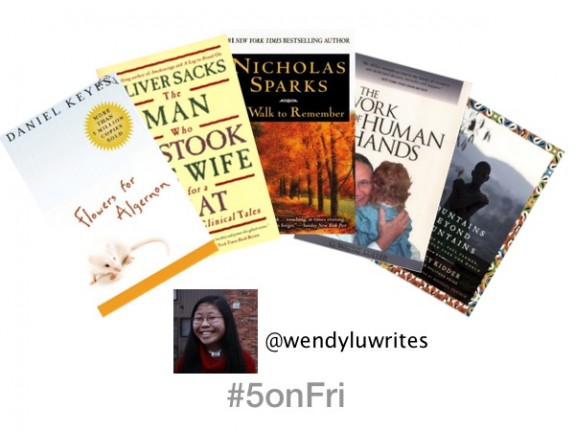At the very thought of “medical books” or books about diseases and other health afflictions, we often think of probing, unemotional texts filled with technical verbiage and doctors studying sick humans as if they were machines with a few broken gears. And maybe some are like that.
But there are also medical narratives that put medicine into a more human perspective and add social context to mental health issues that aren’t being talked about. Think “The Fault in Our Stars,” the quintessential young adult novel by John Green that produced enough tears to form a waterfall that would put the Niagara Falls to shame.
With the much-loved TFiOS, Green succeeded in creating a beautiful, moving novel about teenagers living with cancer without appropriating the lives of people who have actually faced this reality. Ultimately, he taps into a highly sensitive medical topic in such a poignant, honest way that has been unmatched by almost any other fictional work – except maybe Jodi Picoult’s “My Sister’s Keeper.”
Simply put, we need more writing like “The Fault in Our Stars.” If you’re searching for titles with similar themes of health care, clinical practice and inner strength in times of illness, look no further than this week’s #5OnFri.
Along with the following five books, I’ve included quotes from each that illustrate a sliver of the insight that made them widely known favorites. Warning: Today’s #5OnFri books may change your outlook on life. These aren’t just for the medically minded, after all, but for anyone who has been touched by the human condition.
5 Medical Narratives: Fiction and Nonfiction for the Medical Mind
Flowers for Algernon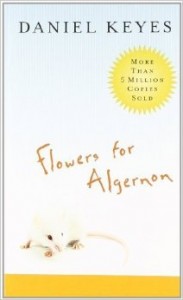
“I am afraid. Not of life, or death, or nothingness, but of wasting it as if I had never been.”
By: Daniel Keyes
Written in the form of fictional diary entries, “Flowers for Algernon” follows a mentally disabled man named Charlie Gordon, the first human test subject to receive a surgery that significantly boosts his intelligence. His doctors continue monitor the health state of Algernon, the laboratory mouse who underwent the surgery before Charlie, and we discover that the results of this miracle experiment may not be permanent.
Later adapted into a movie, this book first started out as a short story published in The Magazine of Fantasy and Science Fiction in 1959 before it was expanded into a full-length novel. With themes of rehabilitation and renewed hope in science, similar to the nonfiction book and critically acclaimed movie “Awakenings,” this novel explores societal treatment toward individuals with mental retardation, the role of language in human intelligence and self-awareness of one’s intellectual and emotional capacities.
The Man Who Mistook His Wife for a Hat
“And I myself was wrung with emotion – it was heartbreaking, it was absurd, it was deeply perplexing, to think of his life lost in limbo, dissolving.”
By: Oliver Sacks
This is the book that, after reading it for a class in college, made me seriously consider attending graduate school for clinical psychology. Oliver Sacks, the same author who penned “Awakenings,” was a neurologist who compiled a series of real case studies in this book, chronicling the details of his patients’ disorders and their everyday lives in “doctor’s notes” fashion. Some of the disorders that are covered include autism, aphasia (language impairment), memory loss and prosopagnosia (the inability to recognize faces).
This one isn’t just emotional – it’s thought-provoking, and compels readers to ponder over the ways in which certain neurological deficits are translated into different behaviors (hence, the title). It’s clear from Sacks’ writing that he’s a scientific thinker, and did not write the book for readers’ entertainment. At the same time, the book is fairly easy to follow and fascinating enough for anyone willing to learn more about the human mind.
A Walk to Remember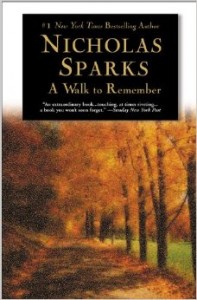
“There are moments when I wish I could roll back the clock and take all the sadness away, but I have the feeling that if I did, the joy would be gone as well.”
By: Nicholas Sparks
Before “The Fault in Our Stars,” there was “A Walk to Remember.” Many of us have forgotten this Nicholas Sparks classic (was this really published in 1999?), a romance novel in which two very different adolescents – Landon, the school jerk and troublemaker, and Jamie, the daughter of a local Baptist minister – fall in love. What ultimately comes in the way of their relationship is Jamie’s diagnosis of leukemia, making them star-crossed.
Unlike the last three books, prior medical knowledge does not significantly enhance your reading experience. Rather than focusing on the cancer itself, Sparks delves into Landon’s relationship with his school peers, his relationship with Jamie’s father and his blossoming romance with Jamie, even as her inevitable fate comes nearer. Although fictional, “A Walk to Remember” draws upon the true story of Nicholas Sparks’ sister, who met and married the love of her life while she was battling cancer.
The Work of Human Hands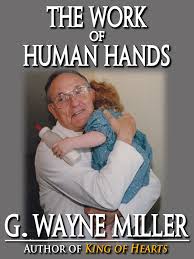
“At the age of 66, Hendren can operate 24 straight hours and then, after a shower and quick breakfast, do another 12 hours of surgery. For this reason, his nickname is ‘Hardly Human.'”
By: G. Wayne Miller
Not many people know about this gem, but for those of you who love biographies, you’ll want to get your hands on this one. “The Work of Human Hands” explores the life of Dr. William Hardy Hendren III, a world-renowned chief surgeon who has saved the lives of hundreds of children with physical deformities who required incredibly complex reconstructive surgeries. We come to know and care deeply for the families of these children, as well as Hendren himself.
The biography also provides a sneak peek into the famous Boston Children’s Hospital, where Hendren was chief of surgery for decades before he retired. Though I may be biased, being one of the many individuals Hendren operated on when I was a few months old, this book made me better appreciate my family’s unwavering commitment to my life and understand the world of pediatric health care.
Mountains Beyond Mountains
“I think Farmer taps into a universal anxiety and also into a fundamental place in some troubled consciences, into what he calls ‘ambivalence,’ the often unacknowledged uneasiness that some of the fortunate feel about their place in the world, the thing he once told me he designed his life to avoid.”
By: Tracy Kidder
Paul Farmer is a physician who specializes in infectious diseases. He is a Harvard professor, co-founder of Partners in Health, a world traveler. “Mountains Beyond Mountains,” a New York Times bestselling nonfiction work that has multiple awards under its belt including ALA Notable Books for Adults, is written in first person from author Tracy Kidder’s perspective about his encounters with Farmer. He writes about Farmer’s family background, his philosophies and his mission to fight tuberculosis overseas and “cure the world.” Instead of adopting an objective tone like Miller does with “The Work of Human Hands,” Kidder lends readers his own perception of who Farmer is, giving his biography of Farmer a more personal touch.
You don’t have to be a doctor or a psychologist to appreciate these books. What books do you love that deal with health, medicine and healing?
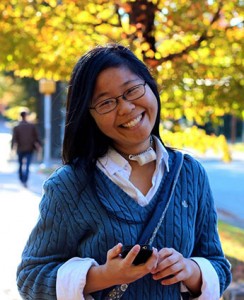 As a recent graduate of UNC School of Journalism, Wendy Lu has written for a variety of print and online publications, including China.org.cn, The Daily Tar Heel, Raleigh Public Record and Chapel Hill Magazine’s The WEEKLY. In college, she served as the managing editor of UNC’s Blue & White Magazine and print co-editor for The Durham VOICE. Wendy is also a former publishing intern at Sleepy Hollow Books and a NaNoWriMo 2008 winner. Learn more about Wendy at https://wendyluwrites.com.
As a recent graduate of UNC School of Journalism, Wendy Lu has written for a variety of print and online publications, including China.org.cn, The Daily Tar Heel, Raleigh Public Record and Chapel Hill Magazine’s The WEEKLY. In college, she served as the managing editor of UNC’s Blue & White Magazine and print co-editor for The Durham VOICE. Wendy is also a former publishing intern at Sleepy Hollow Books and a NaNoWriMo 2008 winner. Learn more about Wendy at https://wendyluwrites.com.



